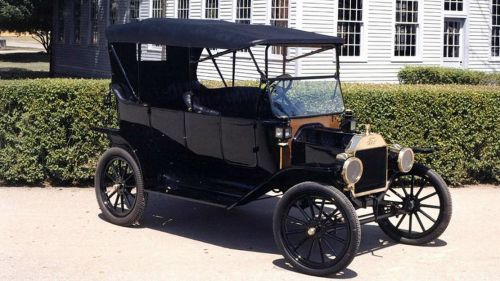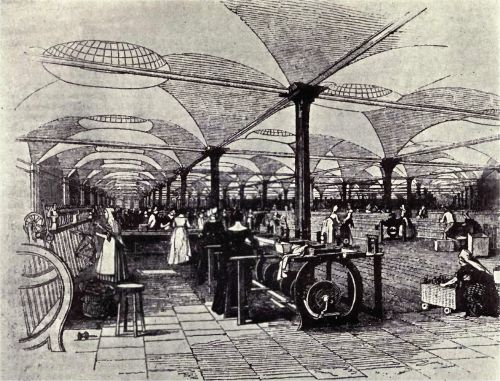Characteristics of the second industrial revolution
Second industrial revolution
Characteristics of the second industrial revolution
The second industrial revolution took place between 1870 and 1914, and refers to a qualitative leap in the industrial order made possible by scientific knowledge, the discovery of new sources of energy and new technological advances. This jump accelerated industrial concentration, on the one hand, and modified the economic model on the other. Let's get to know some of the most important characteristics of this historical process.
1. Fruit of the alliance between scientific knowledge and technological innovation
The second industrial revolution arose thanks to the combination of scientific knowledge with technological innovation. Unlike the first industrial revolution, fundamentally technical and mechanical, scientific research, in conjunction with the needs of technological and economic development, qualitatively transformed the world. For this reason, the scientific-professional qualification, not only technical, became a real demand of the industrial sector, now in search of innovations.
Thanks to this alliance between scientific knowledge and technological innovation, the development of the chemical industry was possible, for example, as well as the development of communications in all its aspects.
2. Appearance of new energies

The second industrial revolution was made possible by the discovery of new energy sources such as electricity and oil. This allowed the development of internal combustion engines that gradually replaced the steam engine.
3. Discovery of new materials and / or new uses for them
Hand in hand with these discoveries, known materials could be harnessed for new uses and new materials were created in the iron and steel industry. For example, copper would become a fundamental material in the conduction of electricity. Also, materials such as steel, aluminum, nickel and zinc were created.
4. Development of the chemical industry
The chemical industry appears as a new thriving sector, which collaborates in the reconfiguration of the economy and society. The flagship country for this process was Germany. New drugs appeared (for example, aspirin), plastic, rubber, dyes, industrial fertilizers and pesticides, explosives and artificial fibers. Along with this, all kinds of products that already existed were improved, such as paper, glass, etc.
5. Development of new technologies and inventions

The last third of the 19th century and the first decades of the 20th saw the creation of new technologies and inventions appeared that transformed the world forever. Among the main inventions we can mention:
- Phone;
- Telegraph;
- automobile with internal combustion engine;
- plane;
- phonograph;
- cinematograph;
- household appliances (vacuum cleaner, gas cooker, etc.); etc.
6. Automation of machinery
One of the most significant changes linked to the development of new technologies was the automation of machinery, which allowed the substitution of labor in many areas of industrial work.
7. Emergence of Taylorism or scientific organization of work
At the beginning of the 20th century, the American industrial engineer and economist Frederick Taylor developed the method of "scientific organization of work" or "scientific management of work", known as Taylorism. This method was intended to enhance the efficiency of the industrial model by regulating the actions of the workforce with machinery and tools. It involved the division of labor, the subdivision of tasks, the reduction of unnecessary movements by workers, the timing of operations, and the remuneration of work according to productivity.
8. Substitution of the "big capitalist" by shareholders
The individual figure of the great capitalist, very typical of the first industrial revolution, was soon minimized, and a new actor appeared, this time collective: the shareholder. With this, the terms of the organization and business participation were reconfigured.
9. Industrial concentration

Although industrial production and trade in general grew, the industries did not multiply, but concentrated a higher level of productivity. If the old factories had 40 or 50 employees in a shed, the new factories managed to gather thousands of them. Many small companies were absorbed by the larger ones, given the difficulty of complying with the new qualitative leap of this stage.
10. Reduction of competition
It also follows from the above that many entrepreneurs could not compete against the largest sectors, so that there was a gradual closure of small and medium-sized industries, significantly reducing competition.
11. Tendency to monopoly and oligopoly
In this phase, a tendency to monopoly and oligopoly developed, that is, to the formation of large corporate groups that concentrated control of the industrial sector, particularly heavy industry and key sectors such as the arms and energy industry (electricity and oil). In other words, trusts , large business conglomerates , grew .
12. Emergence of new world powers
With the new changes, the countries that led the first industrial revolution came to the rear. Thus, countries like the United States and Germany took the lead from England and France, and emerged as the new economic powers of the century.
13. Configuration of contemporary imperialism
The new economic scenario forced the constant search for raw materials and cheap labor. Along with this, new markets were also needed to direct growth. In this way, and in cooperation with the political order, contemporary imperialism was configured. The process ended in the total division of Africa (Berlin Congress in 1886) and Asia between Russia, Great Britain, Japan, France, Holland, Portugal, etc.
- Update date: March 7, 2021.